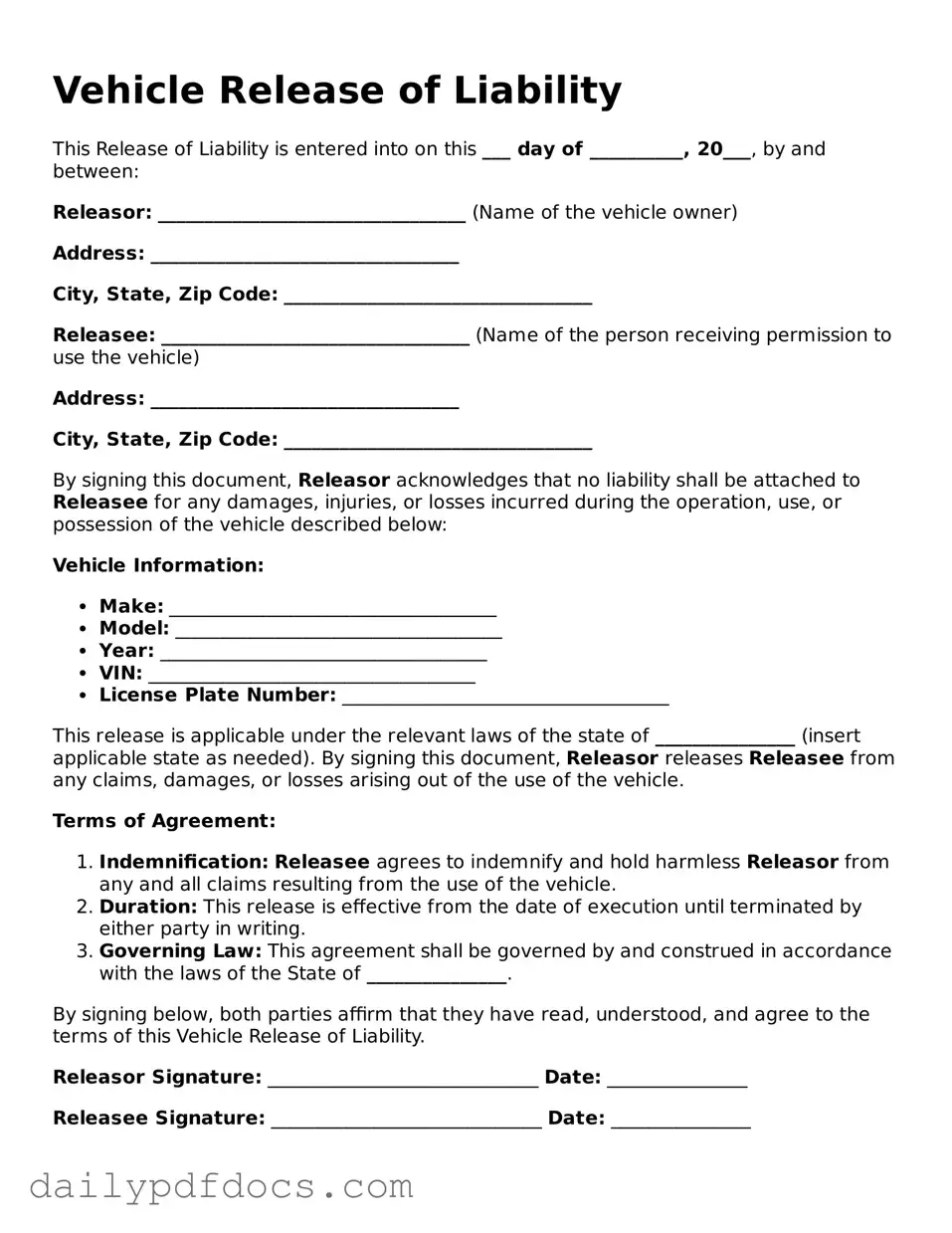Vehicle Release of Liability
This Release of Liability is entered into on this ___ day of __________, 20___, by and between:
Releasor: _________________________________ (Name of the vehicle owner)
Address: _________________________________
City, State, Zip Code: _________________________________
Releasee: _________________________________ (Name of the person receiving permission to use the vehicle)
Address: _________________________________
City, State, Zip Code: _________________________________
By signing this document, Releasor acknowledges that no liability shall be attached to Releasee for any damages, injuries, or losses incurred during the operation, use, or possession of the vehicle described below:
Vehicle Information:
- Make: ___________________________________
- Model: ___________________________________
- Year: ___________________________________
- VIN: ___________________________________
- License Plate Number: ___________________________________
This release is applicable under the relevant laws of the state of _______________ (insert applicable state as needed). By signing this document, Releasor releases Releasee from any claims, damages, or losses arising out of the use of the vehicle.
Terms of Agreement:
- Indemnification: Releasee agrees to indemnify and hold harmless Releasor from any and all claims resulting from the use of the vehicle.
- Duration: This release is effective from the date of execution until terminated by either party in writing.
- Governing Law: This agreement shall be governed by and construed in accordance with the laws of the State of _______________.
By signing below, both parties affirm that they have read, understood, and agree to the terms of this Vehicle Release of Liability.
Releasor Signature: _____________________________ Date: _______________
Releasee Signature: _____________________________ Date: _______________
